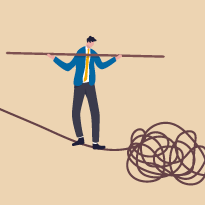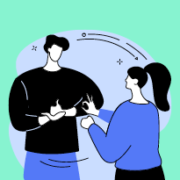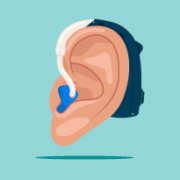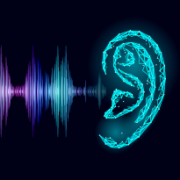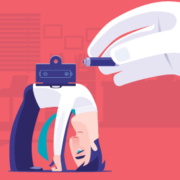5 Tips for Living with Balance Problems
5 Tips for Living with Balance Problems
Get back on sure footing with these easy ways to prevent falls
If you live with balance issues, you’re not alone. About 35% of U.S. and Canadian adults 40 or older are no strangers to them. Let’s take a look at what they are and some simple ways to ease their burden.
The Basics of Balance
Is It a Balance Problem?
How do you know if what you’re experiencing is a one-off or a true balance problem?
Some people have difficulty with tree pose in yoga class. Others aren’t so hot on a unicycle. These are not balance problems — these are illustrations of how each of us has different skills.
Do you feel unsteady walking from a carpeted floor to a hardwood floor? Does a trip to the supermarket make you light-headed? These are examples of what life is like for someone with a balance problem. Simple daily tasks become a battle.
You might be surprised that so many adults have firsthand experience with this sort of problem. But a look at how complicated your balance system is might shed some light.
Your Balance System
Your ability to achieve and maintain balance depends on your brain coordinating input from three sources, integrating the input, and sending output to your eyes and muscles. The three sources are:
- Your eyes send information to your brain about where you are relative to the objects around you.
- This ten-dollar word is simply your body’s ability to sense movement, action, and location. Your skin, muscles, and joints constantly send messages to your brain about what position you’re in and what you’re doing.
- Vestibular system. This is named for the vestibule, a part of your inner ear. This system is responsible for providing your brain with information about your head’s motion, equilibrium, and spatial orientation. There are many small structures that all work together to constantly send your brain information.
Your brain sorts all this information and combines it with information from the parts of your brain responsible for coordination, thinking, and memory. Then it sends messages that control the movements of your eyes, head and neck, torso, and legs to ensure continued balance.
When your balance system works properly, you see clearly while moving, stay oriented with respect to gravity, know your direction and speed, and automatically make posture adjustments to maintain stability.
Causes of Balance Problems
For many people, balance problems set in because of age-related issues such as cardiovascular disease, stiff or damaged joints, or an autoimmune condition. But the inner ear is the most common source of these disorders for all ages, from fluid imbalances to bone damage.
Symptoms range from short and mild to chronic and debilitating. Some common ones are general unsteadiness, vertigo (a spinning sensation), noise or light sensitivity, nausea, coordination problems, and concentration or memory issues.
Diagnosing Balance Issues
Many systems and sources contribute to balance — and interact with yet other systems. That’s why diagnosis is often not straightforward. Your first step, however, should be an audiologist, who might perform any combination of the following.
Videonystagmography (VNG)
This test tells your provider if your brain is getting conflicting messages from your eyes and inner ears. You wear goggles that monitor your eye movements and perform tasks such as following a target and placing your head and body into different positions.
Rotation tests
There are different kinds of rotation tests, but they all provide information about how well your inner ears and eyes work together. You wear goggles or electrodes and your head moves (usually slowly) while your audiologist monitors your eye movements.
Video head impulse test (vHIT)
This also provides information about how well your inner ears and eyes work together. You wear goggles or electrodes, your head moves, and your audiologist monitors your eye movements. The major difference is the head movements are very slight and faster.
Vestibular evoked myogenic potential (VEMP)
VEMP testing evaluates whether certain balance structures and associated nerves are intact and working normally. The test uses adhesive, skin-surface electrodes on the neck and around the eyes as well as earphones like the ones during a hearing test.
Dynamic visual acuity (DVA) testing
DVA testing evaluates your ability to use your inner-ear balance system while your head moves. You identify a target on a computer screen while your head is still and then with your head moving.
Tips for Living With Balance Issues
If you’ve been diagnosed with a balance problem — or you’re starting to think this all sounds familiar in your life — let’s look at five ways to ease your balance burden.
Keep Rooms Clutter-Free
Cutting down on clutter means far less likelihood of tripping. The following will go a long way toward preventing falls:
- Keep walking paths and stairs free of books, clothes, shoes, and children’s or pets’ toys
- Ensure carpets are secured and put no-slip strips on carpet-free floors
- Keep electrical cords out of the way
- Arrange your furniture to ensure clear walking paths
- Keep walking areas outside clear of children’s and pets’ toys, tools, and fallen branches
Use Assistive Devices
Having the right fail-safes in place can make all the difference in one moment of unsure footing:
- Make sure there are secure handrails on both sides of all stairs
- Place easy-access grab bars near toilets, tubs, and showers as well as nonskid mats on surfaces that get wet
- Keep a night light and flashlight close to your bed
- Use a reach stick to grab something that’s out of reach
- If you decide to try a cane or walker, ensure it’s the correct size for you
Dial in Your Diet
Ménière’s disease and hydrops are caused by fluid imbalance in the inner ear. Modifying or eliminating certain substances from your diet can help maintain fluid stability. Check with your doctor before making big dietary changes — discuss the proper approach to:
- Spacing food and fluid intake evenly throughout the day
- Reducing salt and sugar intake
- Eliminating caffeine, nicotine, and alcohol consumption
- Adjusting or eliminating any supplements that might affect your symptoms
Dare to Dine Out
For those with a vestibular disorder, busy settings such as restaurants and supermarkets can be difficult to handle. The mazes of tables, bright lights, tile or carpet patterns, and turning your head to talk can make you dizzy or disoriented. And it saps a lot of energy.
But with some adaptations, you can still eat in relative comfort:
- Avoid rush hour and choose a restaurant with quiet background music.
- Seek out carpeted floors without busy patterns and avoid shiny surfaces, ceiling fans, and busy wallpaper.
- Download a menu in advance to plan your meal ahead of time.
- Choose restaurants that will cater to your dietary needs.
- Sit in the corner away from the bustle, kitchens, and cash registers.
Fine-tune Your Footwear
To help you balance, your feet and ankles constantly gather information about your body position and movement. That’s why it’s crucial for those with balance issues to choose the right footwear:
- Ensure your shoe’s heel is 2.7 cm high or less
- Wear shoes with a hard, thin midsole
- A treaded sole and a treaded, beveled heel helps prevent slipping
- If you tend to slide your feet, wear smooth-soled shoes instead
- Walking barefoot or in socks or slippers might seem like a good idea, but studies have shown those with balance problems do best with shoes, even around the home
If you — or someone you love — have seemed a little unsteady, contact us!

